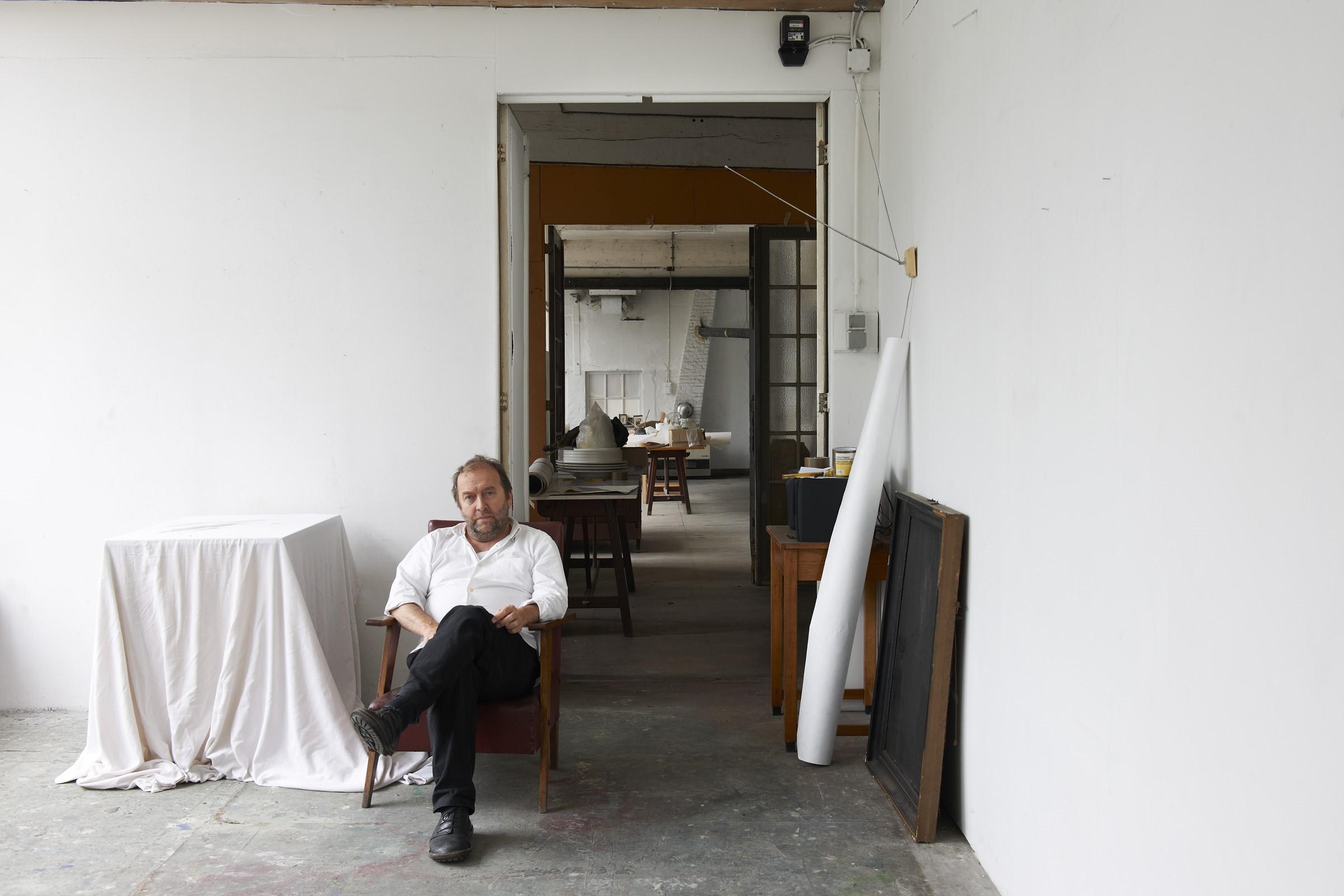
5 minute read
MY FIRST CUSTOMER DIDIER VERRIEST Armando Jongejan FRPS
The RPS Benelux Chapter
INTERVIEW by Armando Jongejan FRPS Didier
Verriest
Didier Verriest is specialised in art, industrial and architecture photography. His fully equipped studio is called Argus Photography and is situated near the ring of Ghent. Beside his commercial work Didier has different personal projects. For example he made "Belgicorum" a study about Federal Belgium’s Historic Buildings and "80 atelierbeelden" a book about 80 visual artists in their workrooms.
© Didier Verriest ARPS - Ronny Delrue
Didier, how did you get involved with photography?
Photography has always been present in my life. I always wanted to be involved with photography. I still have a picture, framed by my parents that I took when I was about seven. When my parents’ tenant left our home I got his small darkroom in the attic. I was twelve. I started professionally in 1976 just because my first customer was ringing at the door. It was a fashion firm from Paris. I could not resist but to get the job I needed to be able to write an invoice so I started my own business. As simple as that! The next step was taken in the early eighties starting with commercial photography. This needed a staff, a 300 square meters photographic studio, a dark room and later on also a digital infrastructure. Following that period came 20 years of food photography, a good job in that period. In 2003, after 30 years I switched to photographing pieces of art for galleries, museums, collectors and most of all, for artists. I can afford to do this on my own, which is a real relief.
You make diverse work, what kind of photography appeals to you the most and why?
Each kind of work; fashion, food, commercial, advertising represents a stage in my life. Today my career is dedicated to art. This last is by far the most interesting and the most challenging. Working for the art community demands a special frame of mind and excellence in mastering photographic tools. The reproduction of a painting needs the photographer to be perfectly transparent, to deliver a file as close as possible to the original. In contrast sculptures and other 3D creations you need to
© Didier Verriest ARPS - Emilio Lopez Menchero
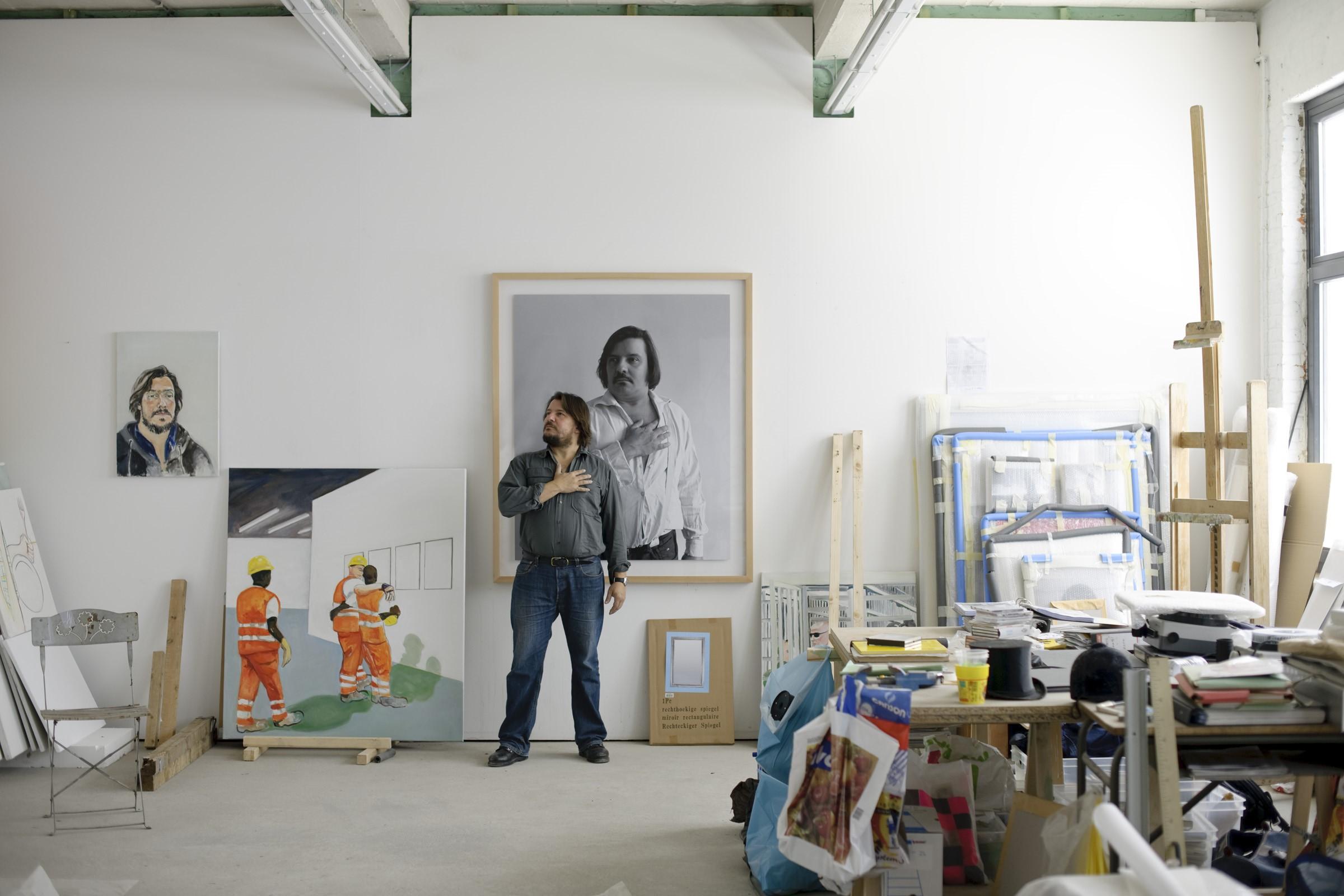
choose a point of view and to setup a lightning scheme. The required skills in mastering colourspaces, optics and art knowledge are huge. My dull studies in Brussels are hardly needed today. The photographic challenge, together with the pleasure of working with some great artists now makes my photographic enjoyment.
You made a photobook “80 atelierbeelden”. How did you create this series?
A lot of portraits exist of artists and a lot of documentary photographs about artists workplaces but not much of the artists in their workplaces. So I started with some friends that are artists. That was 12 years ago. Today a lot of pictures and video exist on the same theme.
What kind of approach did you choose en how did you make your selection of artists? How did you contact them?
The series is about the same subject but with very different people in very different places. My intent was to hold the pictures together with the same technique, to create a mood, a style, that was recognisable in all the pictures. I call it "my guidelines”; a list of technical requirements identical in all the pictures. That includes a risk because I have to start with the guidelines for the first picture and
© Didier Verriest ARPS - Camiel Van Breedam

keep them in place for all the pictures. If I can't keep to the guidelines for the whole string of images the concept collapses. I create an empty box with the guidelines in place and let the artist fill it. I was very aware not to use artists to create my own art, so I avoid all kind of photographic style artefacts.
To create a list of artists I asked some curators to pass me a list. I quickly noticed that I never reached artists outside the curator inner circle. I had to find another way to work around that and found out that it was the artists themselves who decide who belongs to the circle. So I then asked the artists who should be the next one in the row. The series thus became much more exiting and varied. By the way, the photographs are chronologically laid out in "80 atelierbeelden".
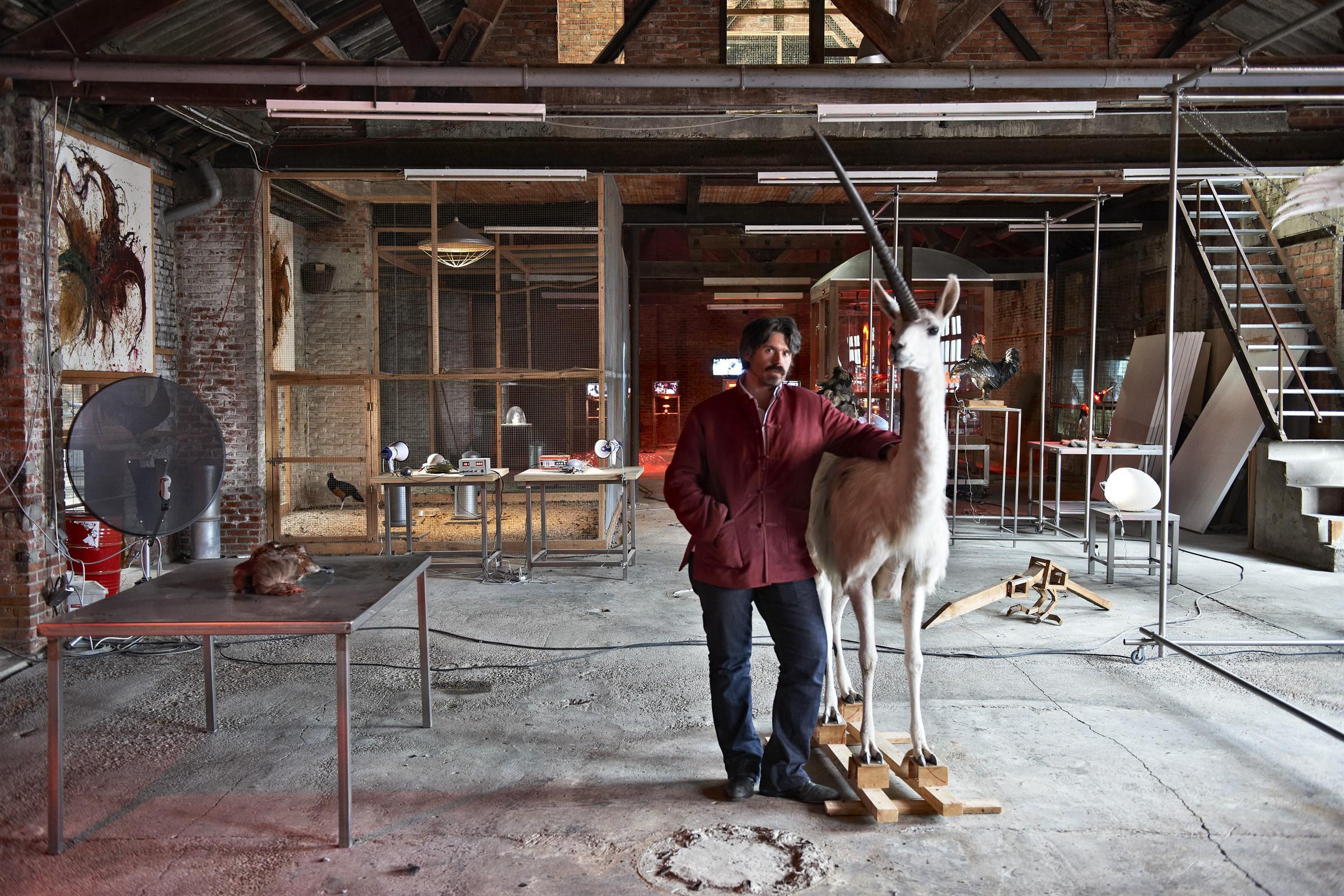
© Didier Verriest ARPS - Koen Vanmechelen

Were you welcome everywhere, or did you sometimes have to make an effort?
The cascade system from one artist to the next made the introduction to the next artist easy. Certainly some artists refused but always with a good reason, I never insisted. My goal was 80 and I reached it easily. The mail and number of phone calls was huge, the agenda often stalled. To reduce the selection to 80 was trickier.
© Didier Verriest ARPS - Mario De Brabandere
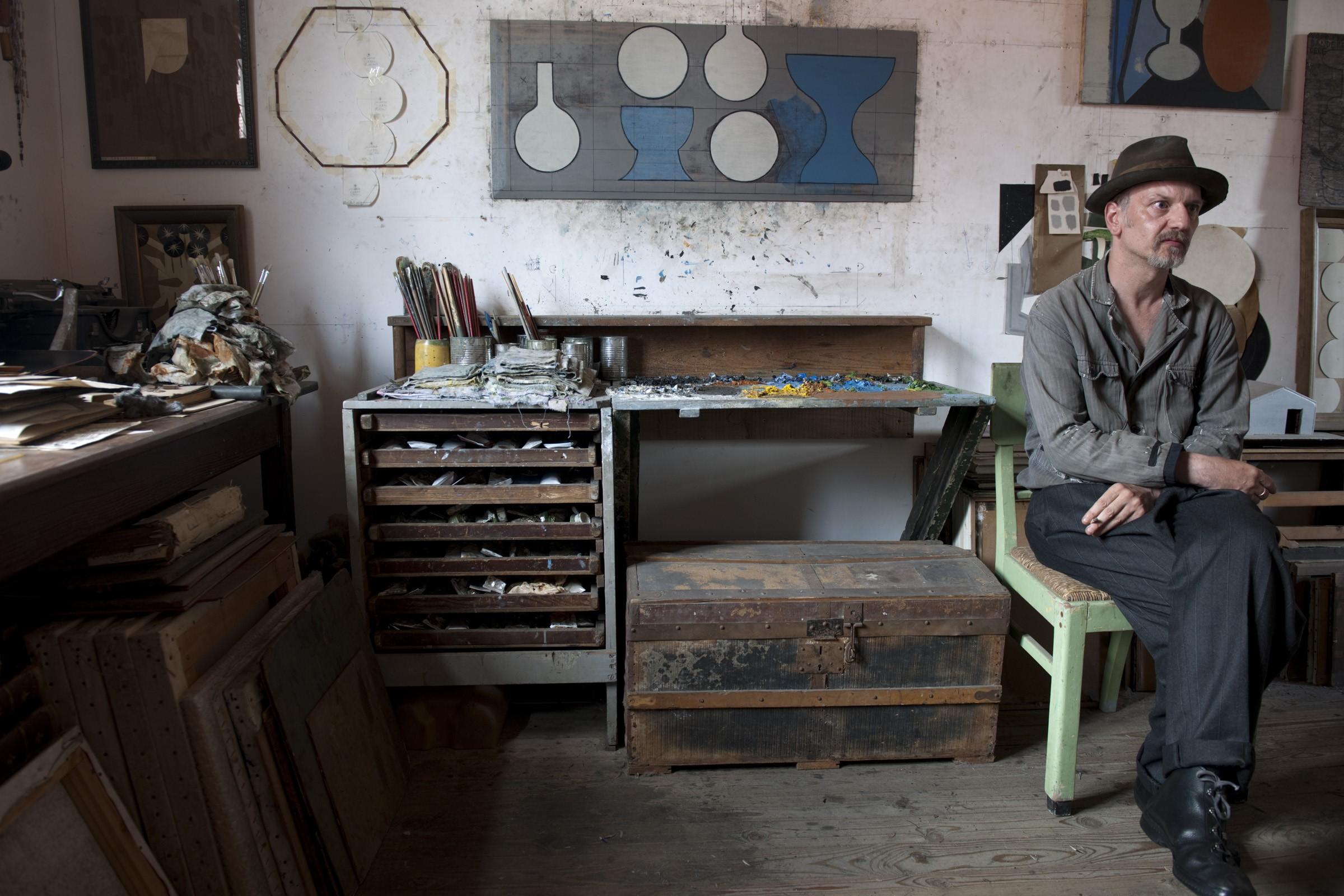
Which artists have stayed with you the most and why?
Some of the artists were real showmen; the photoshoot was painstakingly organised, a precise appointment was made and they gave me strictly the allotted time. No more, no less. As you can guess, some others almost forget the appointment and the whole shoot was pure improvisation. Some artists became instant friends while some others played an intense starring role. The former are still in my life today while the latter ones make souvenirs.
Is the photobook still available? If so, how can we order it?
The book is long since sold out but I still have a few books at home.
You are able to order the book by direct email: dv@didierverriest.com. Hardcover, 168 pages, size 26x26cm, language Dutch.
© Didier Verriest ARPS - Luc Tuymans

© Didier Verriest ARPS - pages 42 and 43 - Michaël Borremans
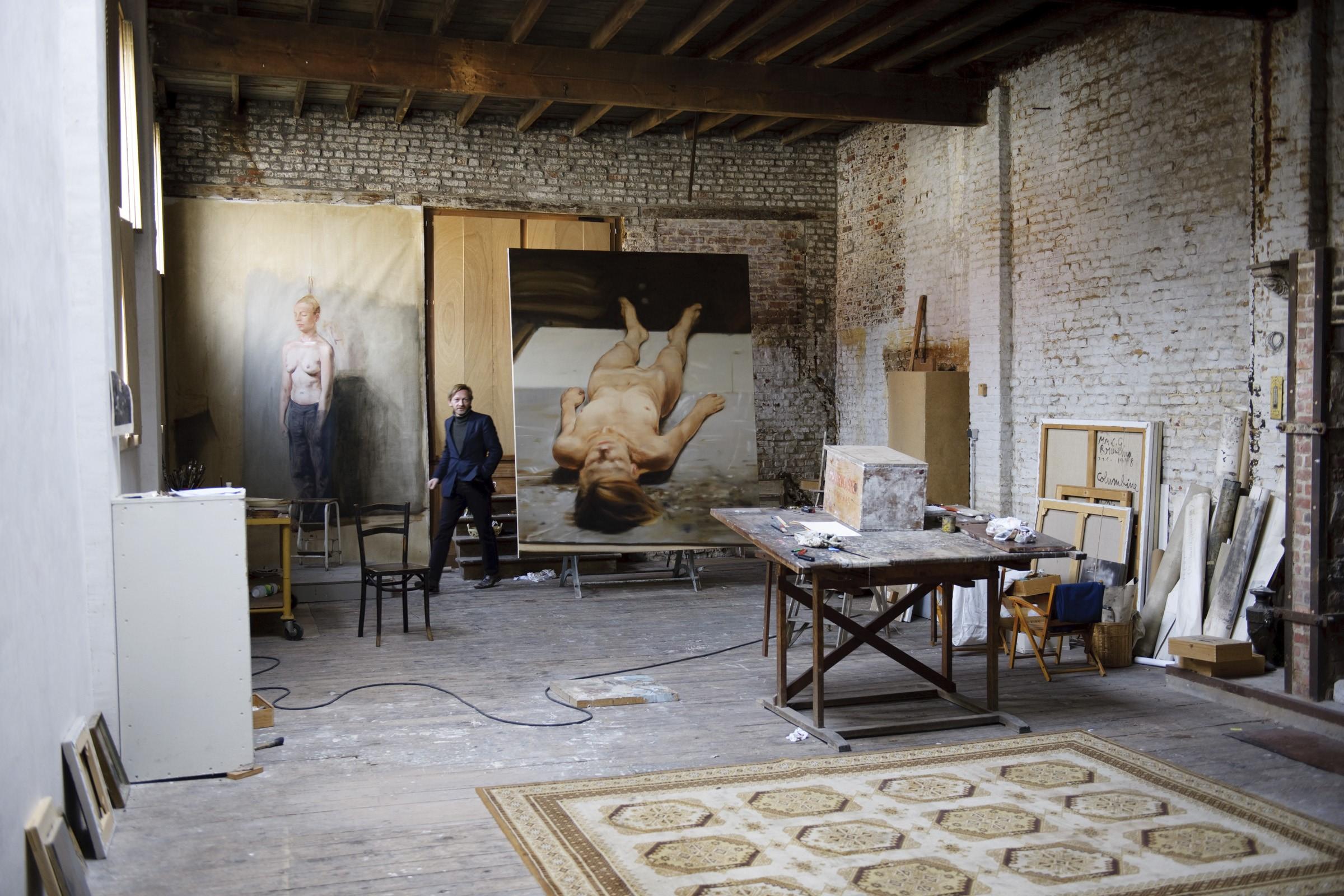

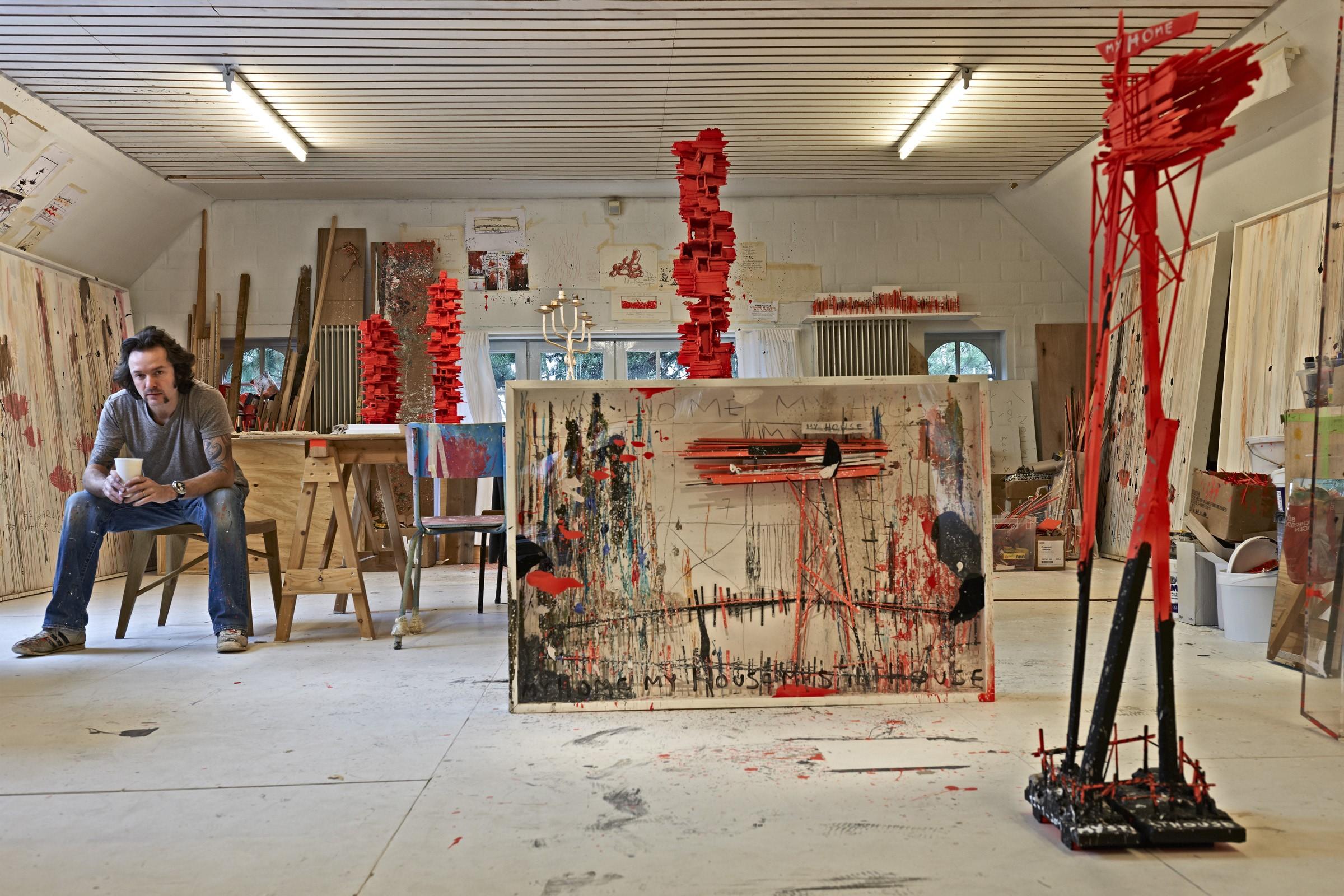
© Didier Verriest ARPS - Arne Quinze







